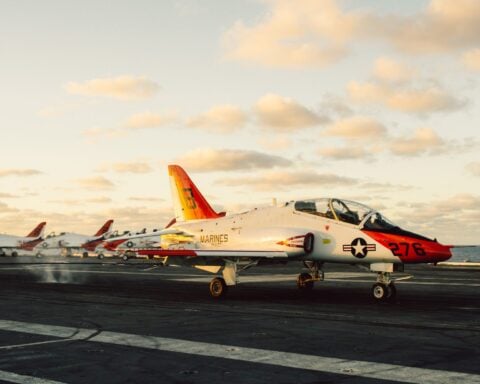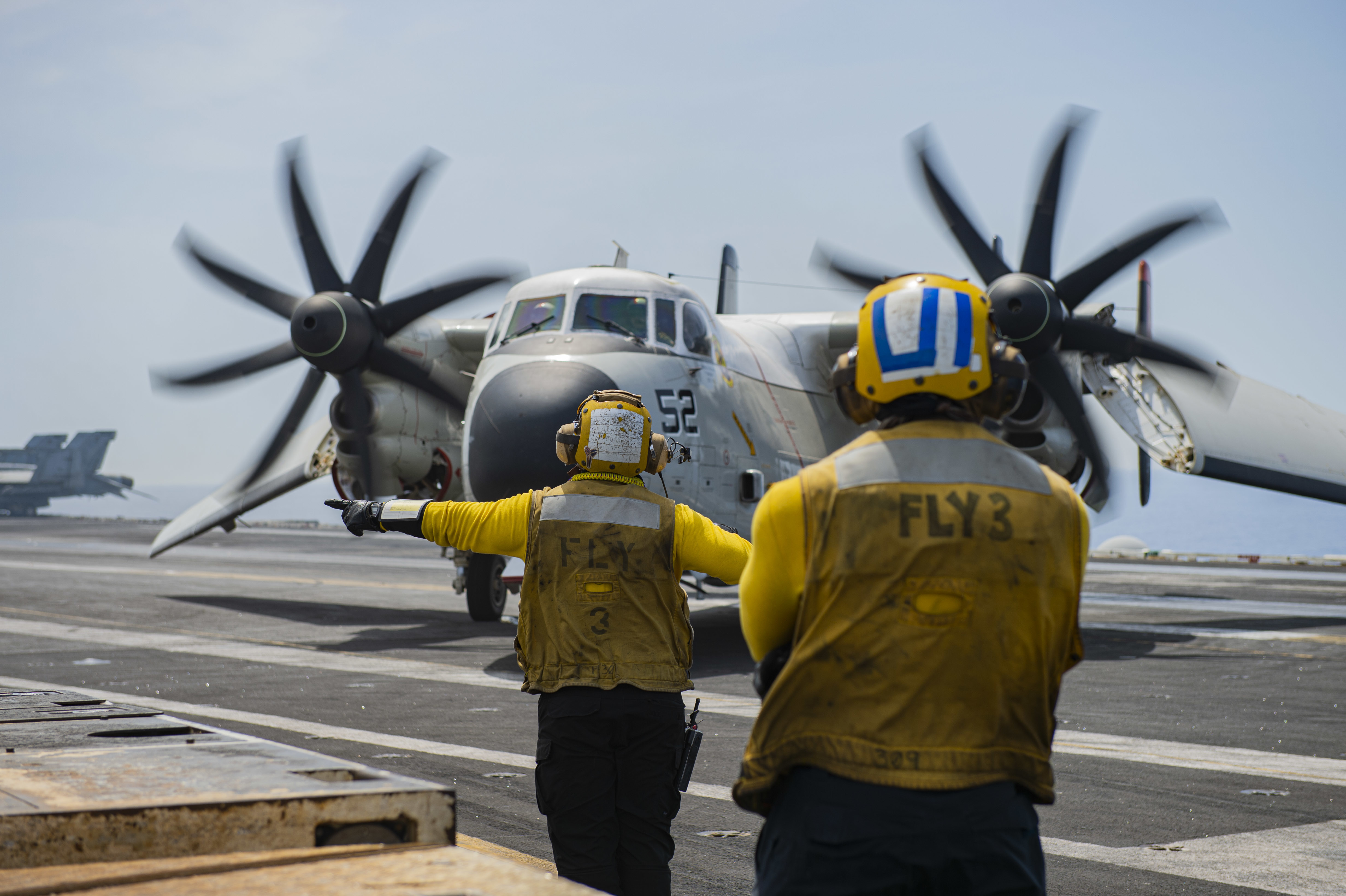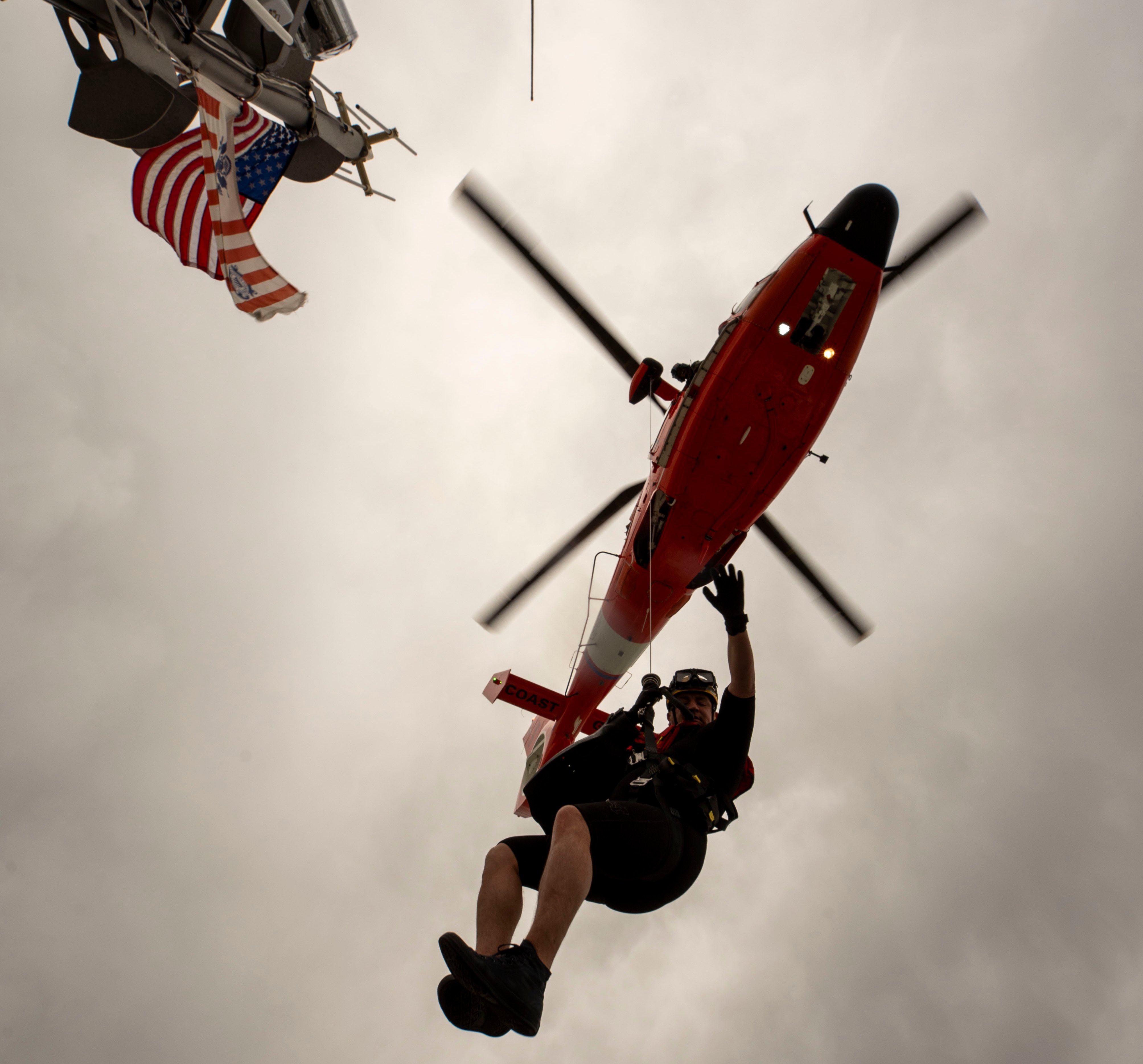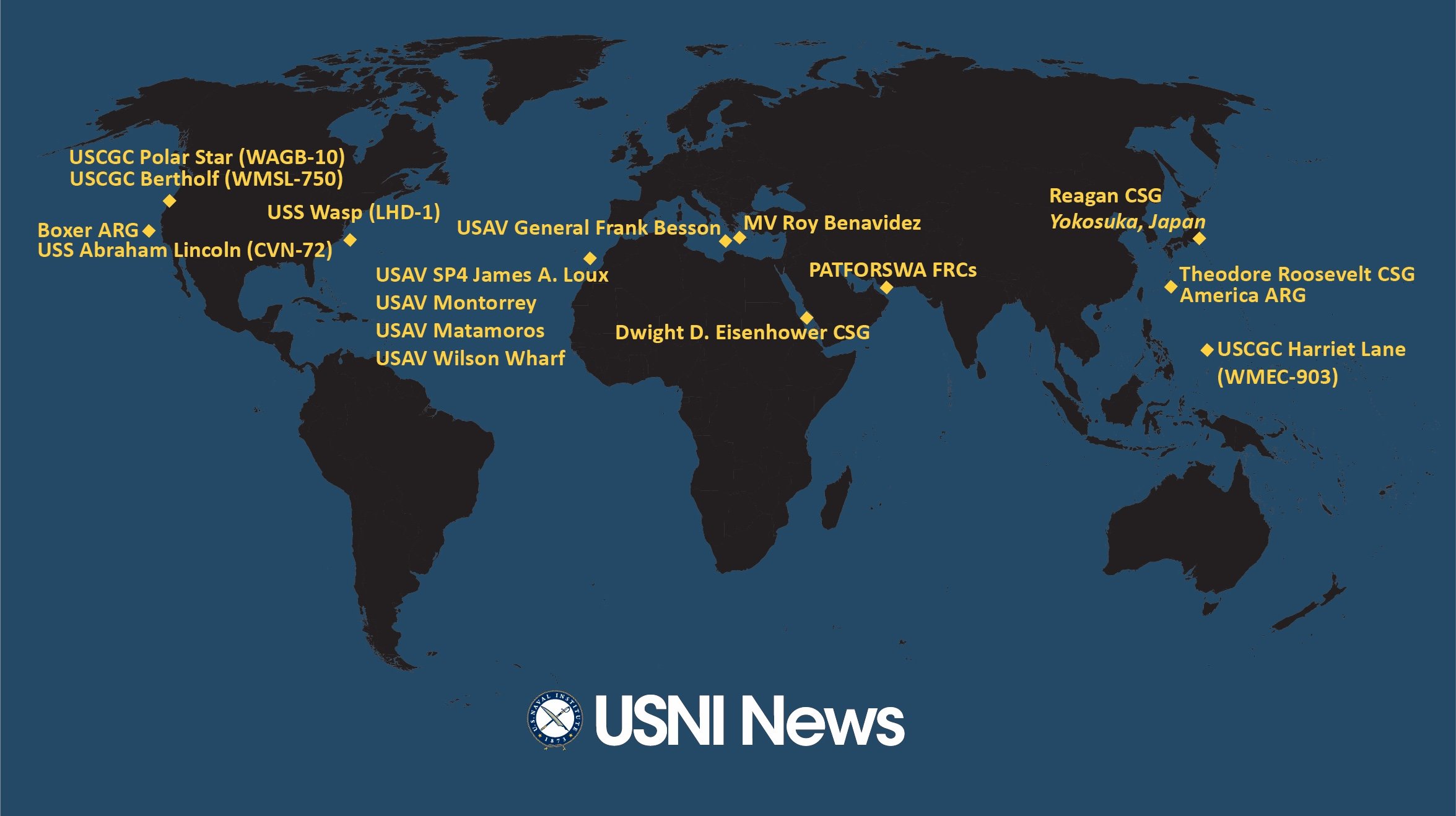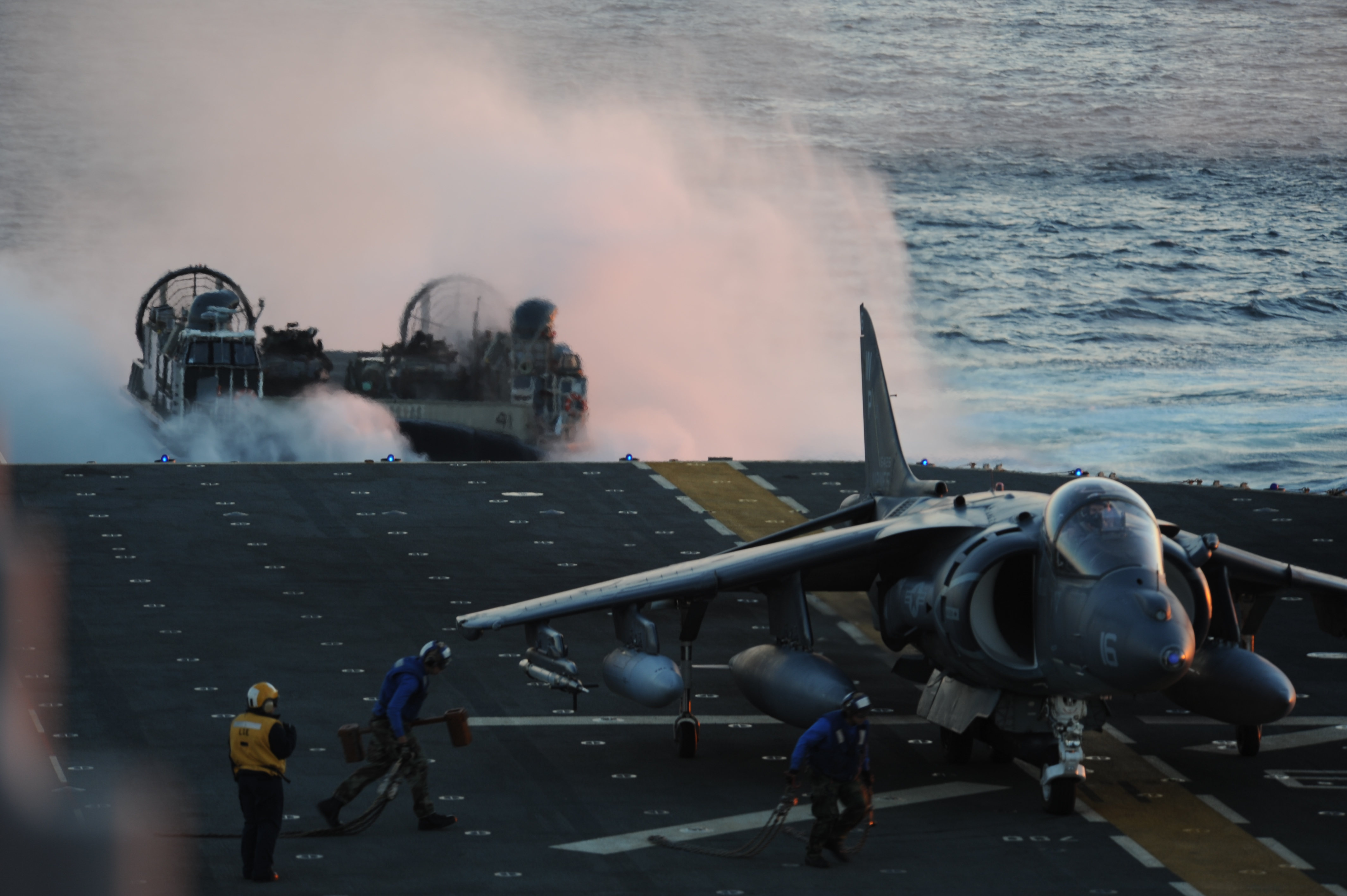
After four days of intense fighting, Secretary of the Navy James Forrestal decided to leave the comforts of his quarters on Adm. R.K. Turner’s flagship, the amphibious force command ship Eldorado, to go ashore and witness firsthand the final stages of the Marine Corps’ success on the island.
Proceeding ashore under the direct supervision of Gen. Holland “Howlin Mad” Smith, Forrestal stepped off his landing craft, looked up at Mount Suribachi and saw the American flag flying high over the strategic fortress. He turned to Smith and said, “Holland, the raising of that flag on Suribachi means a Marine Corps for the next 500 years.”
Today, our nation faces fiscal challenges that range from the debt ceiling to massive program cuts with sequestration. Some question the need for a large defense establishment and forward deployed forces.
There is no doubt that the Defense Department must look to an affordable but still capable force. For a maritime nation, there should be no question that our national security is dependent upon our Navy and Marine Corps team.
Since the early years of our nation, this team has served together to protect the free flow of commerce — off the shores of Tripoli, as we fought the Barbary pirates, to the full-scale military operations in the Pacific during World War II. The range in capability that these naval forces provide serves not only as a symbol of our national security, but also as a resource for smaller-scale operations that only this country can provide.
In September 2010, the container ship Magellan Star was attacked by nine Somali pirates about 80 miles off the coast of Yemen. As part of Task Force 151, elements of the 15th Marine Expeditionary Unit, embarked on the amphibious transport dock Dubuque, quickly responded to the distress call from the Magellan Star.
Once permission was given by the National Command Authority, the modern day Stephen Decatur, U.S. Marine Capt. Alexander Martin, commander of the 2nd Platoon Force Reconnaissance Company, 1st Battalion 4th Marines, quickly overwhelmed the pirates and safely freed the 11 crew members of the Magellan Star. Without this unique, relevant, forward deployed capability on station in the Gulf of Aden, the crew of the Magellan Star might have spent months in a pirate camp.
One significant operation that demonstrates the core capabilities of the Marine expeditionary forces is the mission called Tactical Recovery of Aircraft and Personnel, or TRAP. The precision and flexibility that comes with a forward deployed MEU was clearly demonstrated in March 2011 when a U.S. Air Force F-15 went down near Benghazi, Libya, supporting Operation Odyssey Dawn.
Within minutes of notification of the location of a downed pilot, the Marines of the 26th Marine Expeditionary Unit, embarked onboard the amphibious warship Kearsarge, went into action. Without a permission slip from a host nation, two AV-8B attack aircraft were launched off the Kearsarge to protect the pilot. These aircraft were followed by the newest weapon system in the Marine Corps arsenal, the tilt-rotor MV-22 Osprey.
With the ability to rapidly move troops to an object area, the Ospreys were on the ground, rescued the downed pilot and returned him to the safety of the Kearsarge within a few hours of the crash. The success of this mission can be attributed to many factors, but clearly as a result of superior training, outstanding leadership and stalwart maritime combat capability, the Air Force pilot was returned safely to his family.
In the past few weeks, the amphibious ship San Antonio has been on station, fully capable of defending itself in the eastern Mediterranean to provide the National Command Authority a variety of mission packages to support current operations. Commissioned in 2002, this multi-capable amphibious transport dock has had a storied history. After the Navy/industry team worked together to address the challenges of the first ship in the class, this warship has performed remarkably. In March 2012, the ship was awarded the Navy’s Battle Efficiency award for excellence.
One of the most important missions that the San Antonio class can provide is the Non-Combatant Evacuation Operation.
If it is determined that American citizens are in jeopardy during a crisis in a foreign country, the embarked Marines can quickly evacuate them from an American embassy in harm’s way. They can be taken to a staging area at a forward operating base, such as the San Antonio, where they can be provided berthing and multifaceted medical care until they can be returned home.
The sequel for our post-Cold War national security posture has yet to be written. Some say it will shift to the economically fertile Asia Pacific region, but as long as world demand for oil remains strong, the Middle East will continue to be of strategic importance.
No matter the region, our Navy will be required to maintain a global presence to support the free flow of commerce across the high seas.
The requirement from our combatant commanders to have a Marine Expeditionary Unit on warships in their area of operation 365 days of the year has been detailed in their posture statements and briefed to Congress. In response to Chief of Naval Operations Adm. Jonathan Greenert’s concern on the cost of “gray hull” amphibious warships, I am encouraged by the early industry engagement in the analysis of the next generation of amphibious ships.
I have learned that America’s builder of amphibious warships, Ingalls Shipbuilding, has been investing company research and development focused on removing cost from their San Antonio-class warship.
Our sailors and Marines deserve nothing less than an aggressive industry response to Assistant Secretary of the Navy Sean Stackley’s challenge to reduce the cost of a standard San Antonio-class warship to avoid the nonrecurring engineering involved in designing a new amphibious warship.
As our leaders continue to look for reductions in our national defense, our amphibious forces must remain fully funded and resourced with the latest in technology to perform their full mission set.


